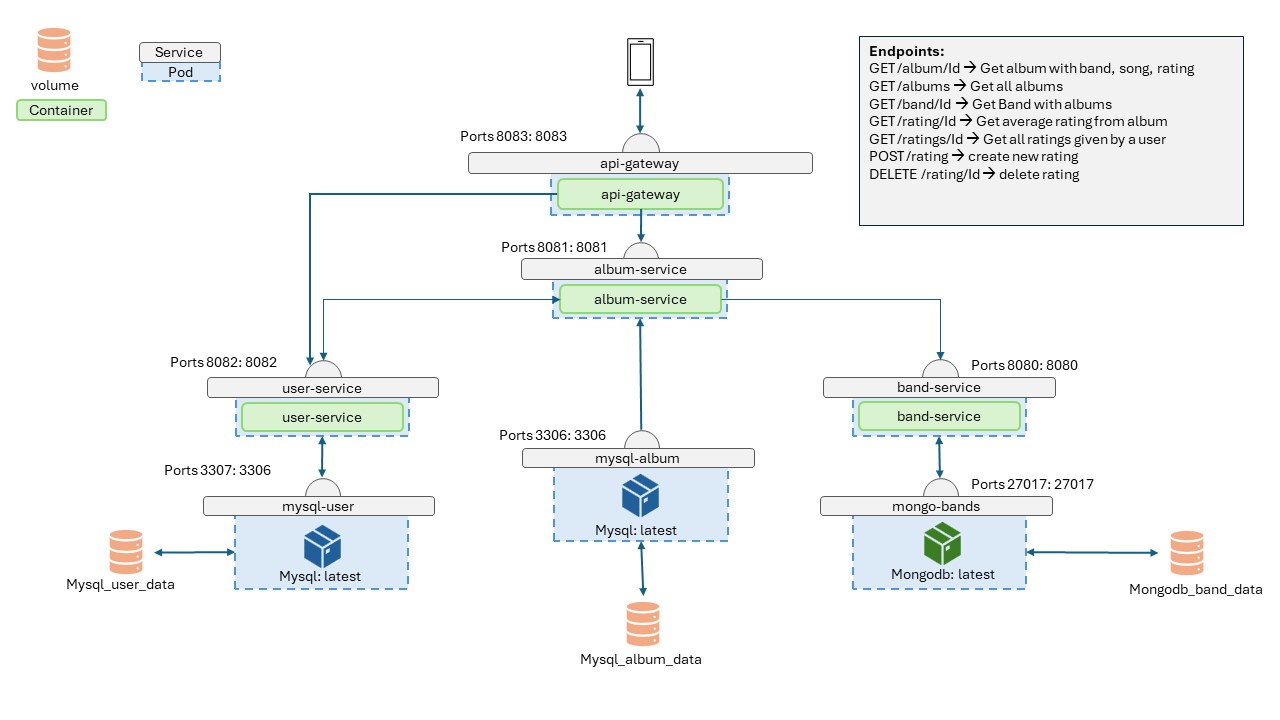Flutter AR APP
Flutter AR APP
OPO: Advanced programming topics & Mobile Development
An innovative mobile application that leverages augmented reality (AR) technology to scan and recognize album covers, providing users with an interactive and immersive music discovery experience. The project features a sophisticated microservices backend architecture and demonstrates advanced mobile development.
Project Overview
Duration: 3 months (September - December 2023)
Team Size: 3 developers
Type: School project (Advanced Programming)
Technologies: Flutter, Java, Microservices
Key Features
AR Recognition System
- Real-time Album Scanning: Camera-based album cover detection and recognition
- 3D AR Overlays: Interactive 3D elements displayed over recognized albums
- Multi-angle Recognition: Robust recognition from various viewing angles and lighting conditions
Music Integration
- Spotify Integration: Direct links to albums and tracks on Spotify
- Album Information: Detailed metadata including artist, release date, and track listings
- Preview Playback: 30-second track previews within the app
- Playlist Creation: Add discovered tracks to personal playlists
User Experience
- Intuitive Interface: Clean, modern UI designed for seamless AR interaction
- Offline Capability: Local database for previously scanned albums
- History Tracking: Personal library of scanned albums and discoveries
- Social Sharing: Share discoveries with friends and social media
Technical Implementation
Frontend (Flutter)
- Cross-platform Development: Single codebase for iOS and Android
- AR Foundation: Unity AR Foundation integration for AR capabilities
- Camera Integration: Real-time camera feed processing
- State Management: Provider pattern for efficient state handling
- Custom Widgets: Reusable UI components for consistent design
Backend Architecture (Microservices)
- Service-Oriented Design: Modular microservices for scalability
- Image Processing Service: Dedicated service for processing album images
- User Management Service: Authentication and user profile management
- Music Data Service: Integration with music APIs and metadata management
- Notification Service: Push notifications for new features and updates
Demo
Architecture & Infrastructure
Microservices Design
- API Gateway: Centralized entry point for all client requests
- Service Discovery: Automatic service registration and discovery
- Load Balancing: Distributed traffic handling across service instances
Data Management
- MySQL: Relational data for user accounts and structured metadata
- MongoDB: Document storage for flexible album and artist information
DevOps & Deployment
- Docker Containerization: Consistent deployment across environments
- API Security: Authentication and authorization using OAuth2 and JWT
- Scalability: Horizontal scaling capabilities for high traffic
Back-end Services Architecture

Challenges & Solutions
Challenge: Scalable microservices communication
Solution: Implemented event-driven architecture with message queues
Technical Achievements
- Cross-platform: Consistent experience across iOS and Android
Learning Outcomes
- Mobile AR Development: Hands-on experience with AR frameworks and mobile development
- Microservices Architecture: Understanding of distributed systems design patterns
- DevOps Practices: Experience with containerization and CI/CD pipelines
Stack
- Frontend: Flutter (Dart), AR Foundation, Unity
- Backend: Java Spring Boot, Node.js
- Databases: MySQL, MongoDB
- Infrastructure: Docker, AWS
- APIs: Spotify Web API, Last.fm API
My contribution
For this project, I was primarily responsible for the development of the Flutter front-end application. I focused on implementing the AR features, designing and building the user interface, and ensuring a smooth and intuitive user experience. Throughout the project, I worked closely with my teammates, who handled most off the back-end services and infrastructure, to ensure seamless integration between the app and the underlying microservices.
My work included integrating AR Foundation, developing custom widgets, and optimizing the app for both iOS and Android platforms. By collaborating effectively with the team, I contributed to delivering a robust and innovative AR music discovery app.
Future Enhancements
- Machine Learning: Deep learning models for improved recognition accuracy
- Social Features: Community-driven album database and reviews
- Augmented Experiences: Interactive AR music videos and artist information
- Voice Integration: Voice commands for hands-free operation